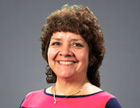Java 7 SE, Part 2 of 4: IO, New IO, and Network Protocols
with expert Brigitte Birze
Java SE 7 platform gave us a brand new file based I/O architecture, NIO2. This new architecture solved most of the problems we saw in the original stream based I/O. You’ll see how the NIO2 Path class is used to represent the underlying file system syntax, in a manner that is transparent to the application. Next you’ll see how the NIO2 Files class works with the Path class. Then we’ll cover the new NIO2 asynchronous channels, to let us monitor and control the completion of our asynchronous events. NIO2 also gives us a new asynchronousChannelGroup to group these channels, and supply them with a pool of threads for resource sharing. And we’ll take a look at the new WatchService file change notification API, which lets you register to be notified when files or directories change on the file system. After our tour of NIO2, we’ll move to the new networking features provided by Java SE 7. We’ll experiment with the URLClassLoader, which now implements the Closable I/F and its close() method. Then we’ll take a look at the new protocols we can now access. One is the Stream Control Transmission Protocol, or SCTP, and another new protocol is Sockets Direct Protocol, or SDP.
Intermediate | 2h 18m | December 29, 2014
Web DevelopmentJavaWeb FrameworksJava SE 7 UpdateJava SE
Course OutlineBrigitte Birze
Brigitte Birze is a seasoned software development professional with over 25 years of experience in Corporate IT and Engineering across many verticals. Brigitte has been involved in every phase of the software development lifecycle from the perspective of several roles: individual contributor, team lead, S/W architect, system engineer, proposal author, and project manager. Her innovative software architectures have resulted in six published papers and eight patents. Brigitte's dynamic communication skills, paired with her depth and breadth of technical knowledge, give her the unique ability to make the complex understandable and to convey technical concepts to cross-functional groups, speaking at the business or technical level.

